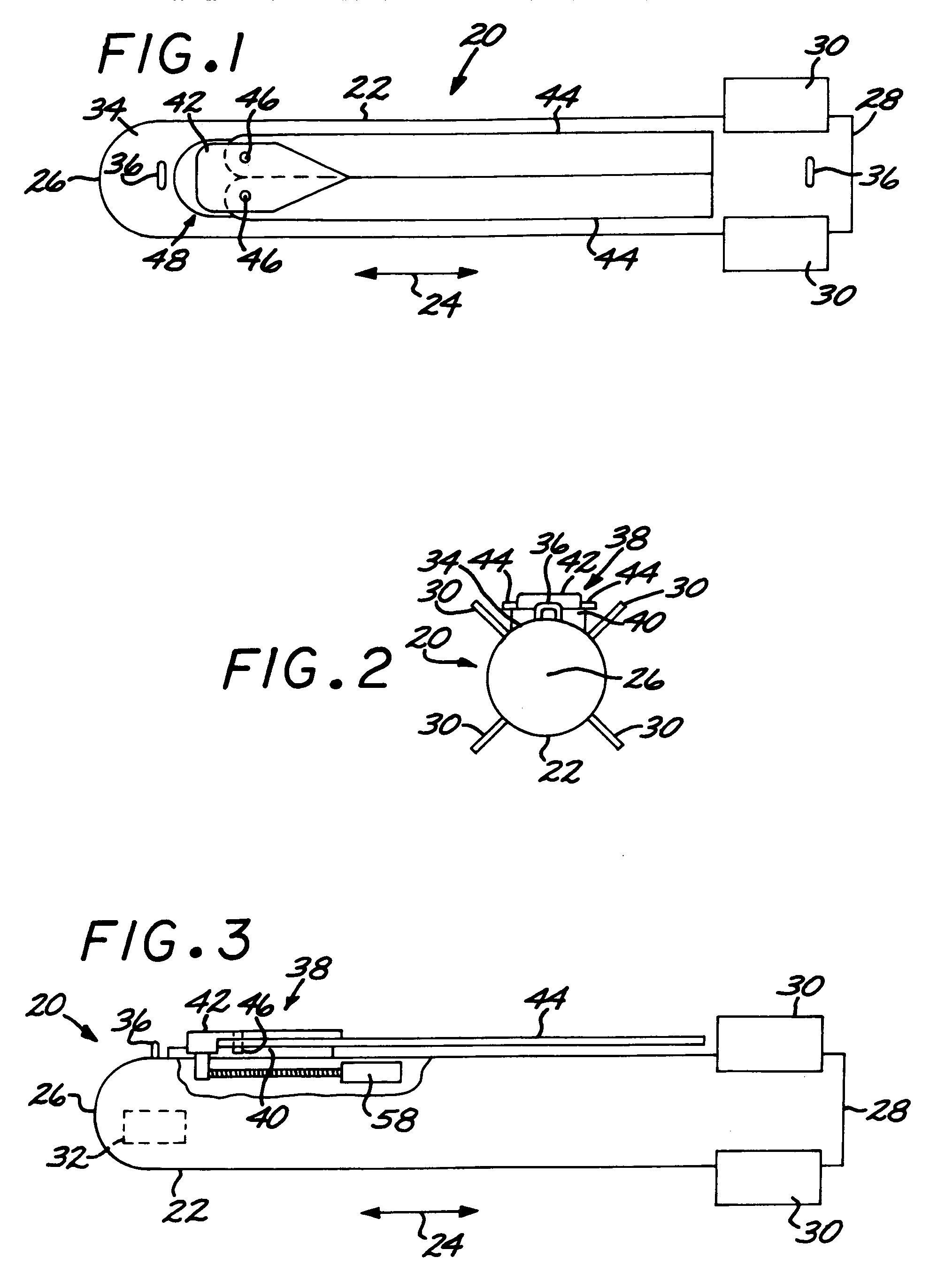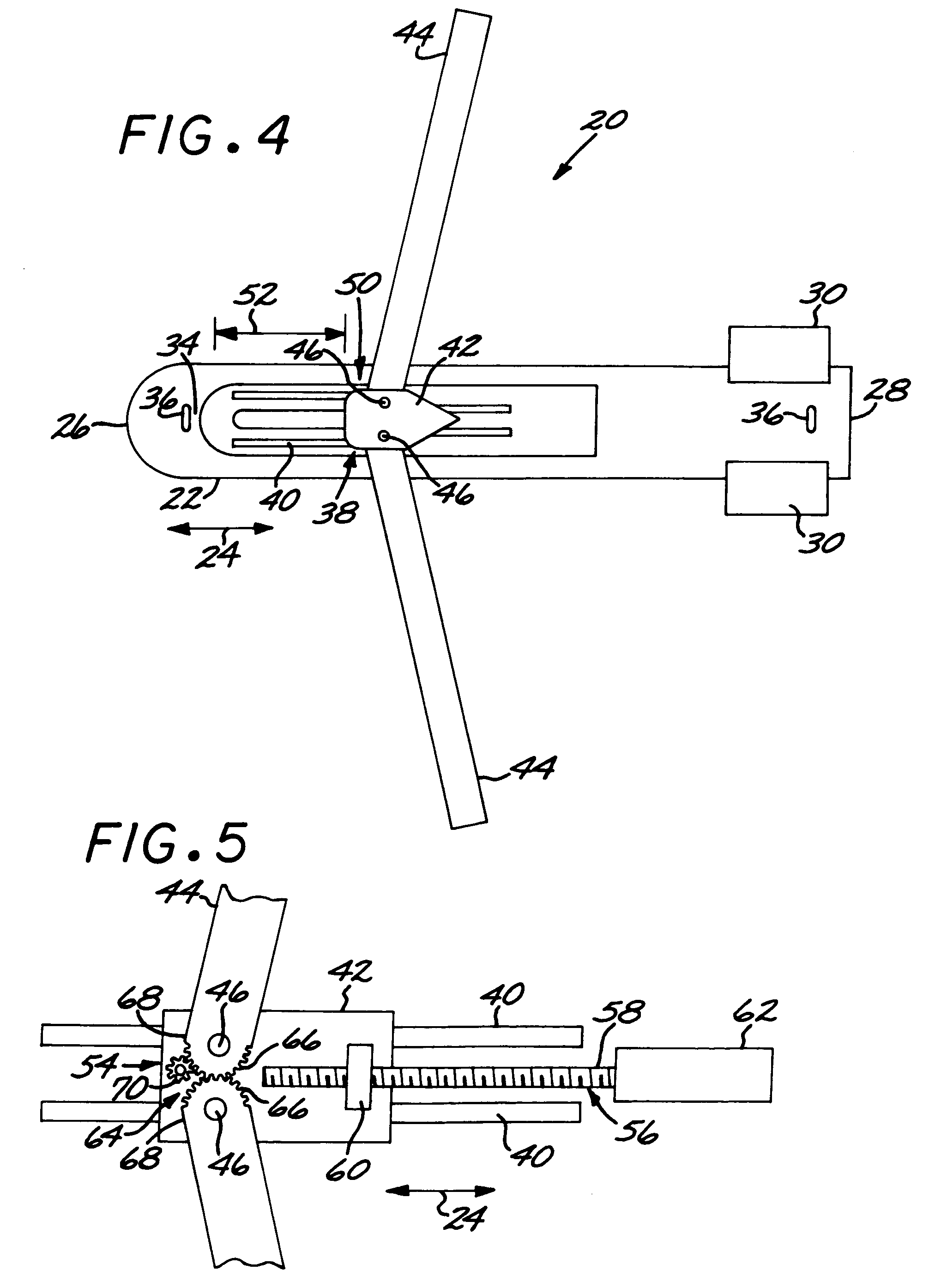Winged vehicle with variable-sweep cantilevered wing mounted on a translating wing-support body
a cantilevered, variable-sweep technology, applied in the field of wings, can solve the problems of adding weight and drag without providing a corresponding benefit in added lift, and achieve the effect of improving the flight performance of the winged vehicl
- Summary
- Abstract
- Description
- Claims
- Application Information
AI Technical Summary
Benefits of technology
Problems solved by technology
Method used
Image
Examples
first embodiment
[0024]FIGS. 1–4 depict a winged vehicle 20 having an elongated fuselage 22 with a direction of elongation 24, a nose 26, and a tail 28. Extending from the fuselage 22 at a location near the tail 28 are four optional, but preferably present, movable guidance surfaces 30 extending outwardly from the fuselage. The optional movable guidance surfaces 30 are moved by actuators (not visible in the drawings) inside the fuselage 22 responsive to commands from an optional controller 32 that senses the position of the winged vehicle 20 in relation to its target and guides the winged vehicle 20 toward its target by movements of movements of the guidance surfaces 30. The controller 32 may optionally include other consistent features found in winged vehicles and known in the art, such as radar or infrared seekers, inertial or GPS guidance units, laser guidance units, transceivers, and communications uplinks and downlinks. A warhead (not visible in the drawings) typically occupies a major portion ...
second embodiment
[0035]FIG. 9 illustrates the winged vehicle 20, wherein elements common with the embodiments of FIGS. 1–6 are assigned the same reference numerals, and the prior discussion is incorporated. In the embodiment of FIG. 9, there is additionally a propulsion system 80. In this case, the propulsion system is in the form of a small solid rocket motor, but it may be a jet engine or other operable propulsion system. The winged vehicle 20 in this case may be a guided missile or a guided bomb that has a propulsive assist. A different drive motor configuration is used, with the drive motor being a pneumatic actuation mechanism with a cylinder and extendable drive piston that engages the wing-support body 42, and which as illustrated is positioned forward of the wing-support body 42. The nose 26 is also of a more aerodynamic shape than the generally hemispherical nose of FIGS. 1–4. These variations may be used singly or together, and in any operably combination with the features of the FIGS. 1–8...
PUM
 Login to View More
Login to View More Abstract
Description
Claims
Application Information
 Login to View More
Login to View More - R&D
- Intellectual Property
- Life Sciences
- Materials
- Tech Scout
- Unparalleled Data Quality
- Higher Quality Content
- 60% Fewer Hallucinations
Browse by: Latest US Patents, China's latest patents, Technical Efficacy Thesaurus, Application Domain, Technology Topic, Popular Technical Reports.
© 2025 PatSnap. All rights reserved.Legal|Privacy policy|Modern Slavery Act Transparency Statement|Sitemap|About US| Contact US: help@patsnap.com



